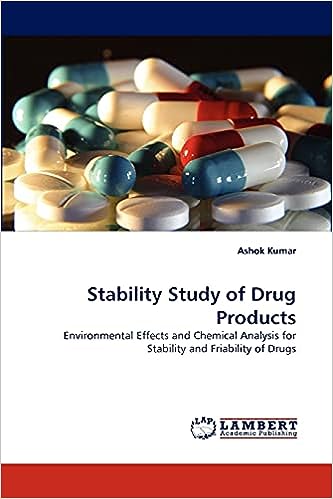Step-by-Step Guide to ICH Q1B: Photostability Testing for Drug Safety
Introduction
Photostability testing is a critical aspect of pharmaceutical development, ensuring that drug products remain stable and effective when exposed to light. The ICH Q1B guideline provides a comprehensive framework for evaluating the effects of light exposure on pharmaceutical products and active ingredients. By adhering to this guideline, manufacturers can identify potential degradation pathways, select appropriate packaging, and ensure the safety and efficacy of their products. This article provides a detailed, step-by-step guide to conducting photostability testing as per ICH Q1B.
What Is ICH Q1B?
ICH Q1B
Step 1: Understand the Scope of ICH Q1B
Before starting photostability testing, it is essential to understand its scope:
- Applies to active pharmaceutical ingredients (APIs) and finished drug products.
- Covers all dosage forms, including tablets, capsules, injectables, and topical formulations.
- Focuses on identifying light-sensitive products to guide packaging and labeling requirements.
Step 2: Set Up Testing Conditions
Photostability testing under ICH Q1B requires controlled exposure to specific light conditions:
- UV Light: Exposure to UV light with an integrated intensity of 200 Wh/m².
- Visible Light: Exposure to visible light with an integrated intensity of 1.2 million lux hours.
These conditions simulate sunlight and indoor lighting to evaluate how the product reacts under typical storage and usage scenarios.
Step 3: Prepare Samples
Sample preparation is critical for accurate results:
- Use representative samples from validated batches.
- Test in both exposed and protected conditions to evaluate the effects of light alone.
- For solid dosage forms, test with and without primary packaging.
This approach helps isolate the impact of light exposure and identifies potential degradation pathways.
Step 4: Conduct the Forced Degradation Study
The forced degradation study involves exposing the product to specified light conditions. Key steps include:
- Place samples in a light chamber that meets ICH Q1B specifications.
- Ensure uniform exposure by rotating samples periodically.
- Record exposure durations and light intensities to verify compliance with ICH requirements.
Step 5: Perform Analytical Testing
After light exposure, test the samples for critical quality attributes, including:
- Potency: Evaluate whether the active ingredient retains its strength.
- Degradation Products: Identify any photodegradation byproducts using validated analytical methods.
- Appearance: Check for changes in color, clarity, or texture.
- Dissolution: Test solid dosage forms for changes in dissolution profiles.
Use validated analytical techniques, such as high-performance liquid chromatography (HPLC), to ensure accurate results.
Step 6: Interpret Results
Interpreting photostability data involves identifying any significant changes in the product’s quality attributes. Key considerations include:
- Determine whether degradation products exceed acceptable limits.
- Assess the impact of light exposure on potency and appearance.
- Evaluate the need for protective packaging or labeling.
If significant changes are observed, the product may require additional stability measures, such as reformulation or specialized packaging.
Step 7: Recommend Packaging and Labeling
Based on the results, manufacturers can make informed decisions about packaging and labeling:
- Light-Resistant Packaging: Use UV-blocking materials or opaque containers to protect light-sensitive products.
- Storage Recommendations: Include instructions to store the product away from direct sunlight or in controlled conditions.
- Labeling Requirements: Add warnings, such as “Protect from Light,” to product labels.
These measures help ensure that the product remains stable throughout its shelf life.
Benefits of Photostability Testing
Conducting photostability testing as per ICH Q1B offers several benefits:
- Enhanced Product Quality: Identifies potential degradation pathways and mitigates risks to product integrity.
- Regulatory Compliance: Ensures alignment with global stability testing requirements.
- Improved Patient Safety: Prevents adverse effects caused by degraded or ineffective products.
Challenges in Implementing ICH Q1B
While photostability testing is essential, it can pose challenges:
- Resource Requirements: Requires specialized light chambers and analytical equipment.
- Complex Data Analysis: Interpreting photostability data may require advanced analytical techniques.
- Cost Implications: Additional testing and packaging considerations can increase production costs.
Best Practices for Photostability Testing
To ensure successful photostability testing, follow these best practices:
- Validate Equipment: Regularly calibrate light chambers to ensure compliance with ICH Q1B specifications.
- Use Robust Analytical Methods: Employ validated techniques to detect degradation products accurately.
- Train Personnel: Provide training on ICH Q1B requirements and testing methodologies.
- Leverage Stability Software: Implement advanced stability software for pharmaceuticals to streamline data collection and analysis.
Emerging Trends in Photostability Testing
Technological advancements are reshaping photostability testing practices:
- Automation: Robotic systems streamline sample handling and testing processes.
- Digital Tools: Electronic data management systems improve accuracy and efficiency in regulatory submissions.
- Sustainability: Eco-friendly packaging materials are gaining traction, aligning with global sustainability goals.
Conclusion
ICH Q1B provides a robust framework for photostability testing, enabling manufacturers to ensure the safety, efficacy, and quality of their drug products. By following this step-by-step guide, pharmaceutical companies can identify potential risks, implement protective measures, and comply with international regulatory requirements. With advancements in technology and a focus on sustainability, photostability testing continues to evolve, supporting innovation and quality in the pharmaceutical industry.
